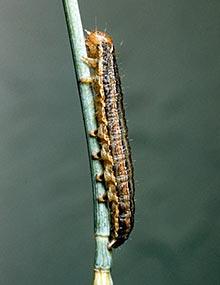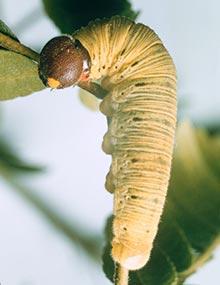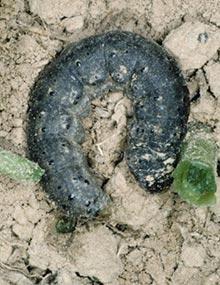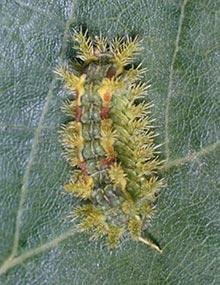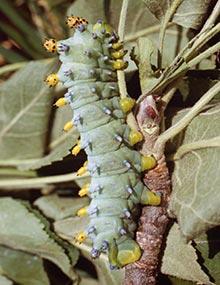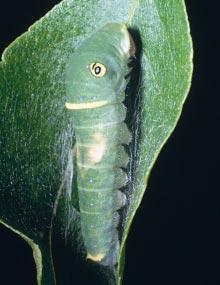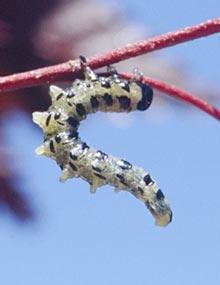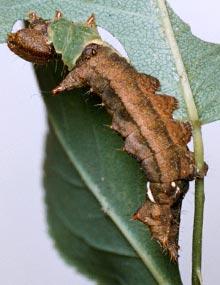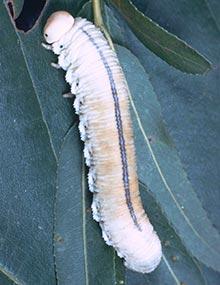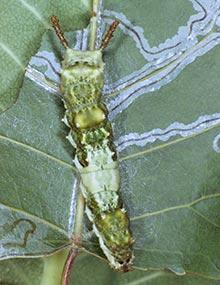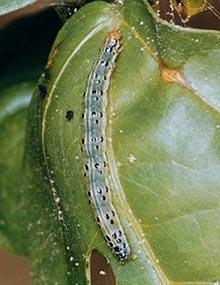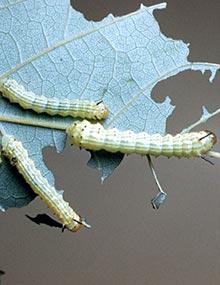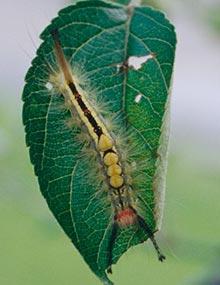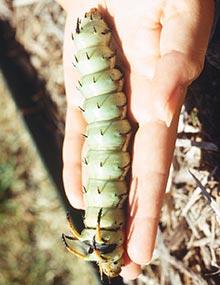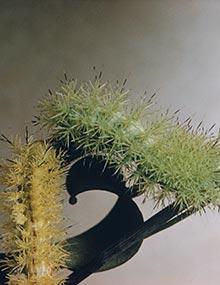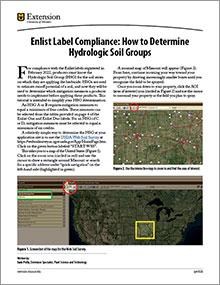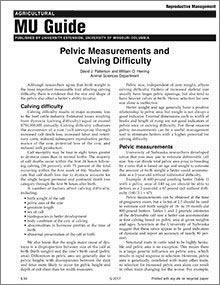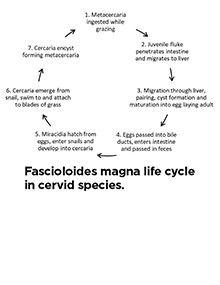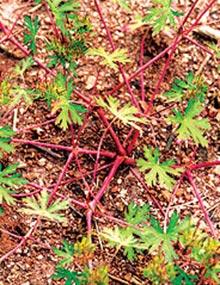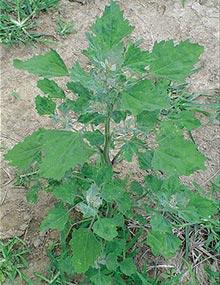Caterpillars in Your Yard and Garden, Page 03
Reviewed
Armyworm caterpillars (Pseudaletia unipunctata) are present from early summer to fall. They produce three generations per year.
Caterpillars in Your Yard and Garden, Page 38
Reviewed
Silverspotted skipper caterpillars (Epargyreus clarus) are present in summer and fall. They produce two to three generations per year.
Caterpillars in Your Yard and Garden, Page 06
Reviewed
Black cutworm caterpillars (Agrotis ipsilon) are present from late spring to fall. They produce one to three generations per year.
Caterpillars in Your Yard and Garden, Page 41
Reviewed
Spiny oak slug caterpillars (Euclea delphinii) are present in summer and fall. They produce one to two generations per year.
Caterpillars in Your Yard and Garden, Page 09
Reviewed
Cecropia moth caterpillars (Hyalophora cecropia) are present from May to August. They produce one generation per year.
Caterpillars in Your Yard and Garden, Page 44
Reviewed
Tiger swallowtail caterpillars (Papilio glaucus) are present from May to October. They produce two to three generations per year. Preferred host plants include hoptree, birch, tulip tree, ash, basswood, cherry, apple, willow and magnolia.
Caterpillars in Your Yard and Garden, Page 12
Reviewed
Dusty birch sawfly caterpillars (Croesus latitarsus) are present in summer and fall. They produce two to three generations per year.
Caterpillars in Your Yard and Garden, Page 47
Reviewed
Unicorn caterpillars (Schizura unicornis) are present from summer to fall. They produce one generation per year.
Caterpillars in Your Yard and Garden, Page 15
Reviewed
Elm sawfly caterpillars (Cimbex americana) are present from summer to fall. They produce one generation per year.
Caterpillars in Your Yard and Garden, Page 50
Reviewed
Viceroy caterpillars (Limenitis archippus) are present from early summer to fall. They produce two generations per year.
Caterpillars in Your Yard and Garden, Page 18
Reviewed
Garden webworm caterpillars (Achyra rantalis) are present from late spring to fall. They produce two to three generations per year.
Caterpillars in Your Yard and Garden, Page 21
Reviewed
Greenstriped mapleworm caterpillars (Dryocampa rubicunda) are present from late spring to late fall. They produce one to two generations per year.
Caterpillars in Your Yard and Garden, Page 53
Reviewed
Whitemarked tussock moth caterpillars (Orgyia leucostigma) are present from May to October. They produce two generations per year.
Caterpillars in Your Yard and Garden, Page 24
Reviewed
Hickory horned devil caterpillars (Citheronia regalis) are present from July to October. They produce two generations per year.
Caterpillars in Your Yard and Garden, Page 56
Reviewed
Zebra swallowtail caterpillars (Graphium marcellus) are present from May to November. They produce two to three generations per year.
Caterpillars in Your Yard and Garden, Page 27
Reviewed
Io moth caterpillars (Automeris io) are present from July to October. They produce two generations per year.
Reducing Losses When Feeding Hay to Beef Cattle
Reviewed
Feeding hay to cattle is expensive, mostly due to waste. Learn good management practices to minimize the losses that occur due to poor storage methods, improper feeding methods, or both.
Enlist Label Compliance: How to Determine Hydrologic Soil Groups
New
Learn how to use the USDA Web Soil Survey interactive map to determine your field's hydrologic soil group for the soil series on which you plan to apply an Enlist herbicide.
Missouri Farm Labor Guide
Revised
Learn good human resource practices related to employee recruitment, hiring, onboarding, training and termination that your farm or agribusiness can use.
Pelvic Measurements and Calving Difficulty
Reviewed
Although researchers agree that birth weight is the most important measurable trait affecting calving difficulty, there is evidence that the size and shape of the pelvis also affect a heifer’s ability to calve.
Liver Flukes in Missouri: Distribution, Impact on Cattle, Control and Treatment
Reviewed
Cattle operations should evaluate their risk for is Fascioloides magna, also known as the deer fluke or the giant liver fluke. Learn about its distribution in Missouri, its life cycle, treatment and more in this guide.
Quail-Friendly Plants of the Midwest, Page 58
Reviewed
Leaves of Geranium species are deeply cleft and palmately lobed. Seeds are located within the sharply pointed “crane’s bill” formed by the tubelike style of the flower.
Quail-Friendly Plants of the Midwest, Page 26
Reviewed
Illinois bundleflower can be identified in summer by the doubly compound, fernlike leaves and white spherical flower heads. By fall, the stems become tough and woody, and the seedpods are distinctive, bearing a ball-shaped cluster of pods, each containing several flat, brown seeds.
Quail-Friendly Plants of the Midwest, Page 29
Reviewed
Lambsquarters is rather nondescript and typically grows 2-6 feet tall. Leaves are triangular or kite-shaped, and their surfaces often have a powdery white appearance.
